Overview
The article highlights the emotional challenges faced by healthcare providers, particularly in the realm of documentation. It provides examples of HPI medical scribe charts designed to enhance efficient documentation in healthcare settings. Effective documentation practices are not just important; they are crucial for improving patient care and clinical decision-making. Administrative burdens can significantly impact the quality of care, leaving providers feeling overwhelmed.
By utilizing various tools and training programs, we can streamline record-keeping and alleviate these burdens. Imagine a work environment where you can focus more on patient interactions rather than paperwork. This shift not only benefits healthcare providers but also enhances the overall patient experience.
We encourage you to explore these solutions and consider how they might ease your daily challenges. Together, we can foster a more supportive healthcare environment that prioritizes both provider well-being and patient care.
Introduction
In the fast-paced realm of healthcare, the weight of administrative tasks can often overshadow the essential mission of patient care. Many healthcare professionals find themselves overwhelmed, yearning for more time to connect with their patients. With the rise of innovative solutions like AI-driven medical scribing, there emerges a unique opportunity to streamline documentation processes. This shift not only enhances efficiency but also enriches patient interactions.
However, as these technologies become more prevalent, important questions arise:
- How can practitioners seamlessly integrate these tools into their workflows?
- What best practices can ensure that the quality of care remains paramount?
This article explores seven compelling examples of HPI medical scribe charts, showcasing strategies that not only improve efficiency but also nurture a more compassionate healthcare environment.
CosmaNeura: Streamline HPI Documentation with Intelligent AI Solutions
In the demanding world of healthcare, professionals often grapple with overwhelming administrative tasks that can detract from their ability to connect meaningfully with patients. CosmaNeura understands these emotional challenges and offers . By automating the intake and triage processes, the platform enables healthcare providers to prioritize significant interactions with individuals, fostering a more compassionate care environment.
Imagine a world where appointment scheduling, medical record management, and billing are seamlessly handled by advanced AI capabilities. This is not just a dream; it's a reality with CosmaNeura. The platform ensures adherence to Catholic teachings, providing a robust ethical framework for care while alleviating the burdens of administrative work.
By enhancing the efficiency of the HPI medical scribe chart example, CosmaNeura significantly improves the clinical experience. Caregivers can now deliver compassionate care, free from the distractions of paperwork. This shift not only enriches the patient experience but also empowers healthcare professionals to focus on what truly matters—their patients.
Are you ready to transform your practice? Embrace the change that CosmaNeura offers and experience the profound difference it can make in your daily interactions with those you care for. Let’s prioritize compassion together.
DeepScribe: Enhance HPI Charting with Ambient AI Technology
In the demanding world of healthcare, providers often face emotional challenges that can hinder their ability to connect with patients. Administrative burdens, such as note-taking, can distract from the crucial interactions that define patient care. DeepScribe employs ambient AI technology to automatically transcribe and summarize interactions in real-time, significantly improving the record-keeping process. This innovative method allows healthcare providers to maintain eye contact and engage more fully with individuals, minimizing distractions from note-taking.
As a result, becomes more precise and thorough, capturing the nuances of discussions with individuals. Imagine consultations that are, on average, 26.3% shorter while still maintaining the quality of interaction with clients. Furthermore, medical facilities utilizing ambient AI solutions report up to a 40% decrease in recording time. This leads to enhanced clinical outcomes and greater practitioner satisfaction.
By simplifying records, DeepScribe enhances the efficiency of patient interactions, fostering a more compassionate care environment. However, it is crucial for healthcare providers to ensure that conversational AI tools are ethically utilized and legally compliant. This aligns with CosmaNeura's mission to uphold Catholic values in healthcare.
Incorporating insights from case studies, it becomes evident that overcoming resistance to innovation is essential for maximizing the benefits of AI solutions like DeepScribe. How can we support each other in embracing these advancements? Together, we can create a more nurturing and effective healthcare experience for all.
ScribeMD: Real-World HPI Medical Scribe Notes for Effective Documentation
At ScribeMD, we understand the emotional challenges healthcare providers face in maintaining accurate records. Our valuable assortment of illustrates best practices in record-keeping, highlighting the critical importance of capturing essential details like symptom onset, duration, and associated factors. For example, consider a 57-year-old woman with a five-year history of Crohn's disease, who presented with abdominal pain rated at 5/10. Recording such details not only assists in precise diagnoses but also significantly enhances the overall quality of care.
Effective HPI records are vital for clinicians, serving as the foundation for clinical decision-making. Thorough notes enable healthcare professionals to swiftly evaluate an individual's condition and adjust their strategy accordingly. By examining these exemplary notes, professionals can learn to develop comprehensive and succinct HPI medical scribe chart examples that align with medical standards and enhance outcomes for individuals.
The recent H&P contests showcase the profound impact of clear and precise records. Participants revised H&P notes to enhance clarity and detail, ultimately leading to improved diagnostic capabilities. Such initiatives emphasize our continuous dedication to refining medical writing methods, ensuring practitioners are equipped with the essential tools for effective care.
Are you ready to elevate your record-keeping practices? Together, we can foster a healthcare environment that prioritizes clarity and compassion, ultimately benefiting both providers and patients alike.
SOAPNoteAI: Generate Accurate HPI SOAP Notes Efficiently
Healthcare professionals often face overwhelming administrative burdens that can detract from the quality of patient care. How can we ease this stress? SOAPNoteAI simplifies the creation of HPI medical scribe chart examples by providing organized templates that assist throughout the recording process. This innovative tool captures all relevant information in a standardized format, facilitating clear and effective communication of individual details.
By utilizing SOAPNoteAI, healthcare professionals can greatly enhance their record-keeping efficiency. This allows them to focus more on caring for individuals without sacrificing the quality of their files. Imagine being able to provide high-quality care while utilizing an HPI medical scribe chart example to ensure that essential information is consistently noted and readily available. The implementation of uniform record-keeping methods not only improves clarity but also facilitates better health outcomes.
Furthermore, SOAPNoteAI incorporates features such as appointment scheduling and medical record management. These additions alleviate the burden of administrative tasks, enabling physicians to reclaim valuable time. With less time spent on paperwork, healthcare providers can , fostering a nurturing environment that truly prioritizes care.
Are you ready to transform your practice? Embrace the support that SOAPNoteAI offers and experience the difference it can make in your daily routine.
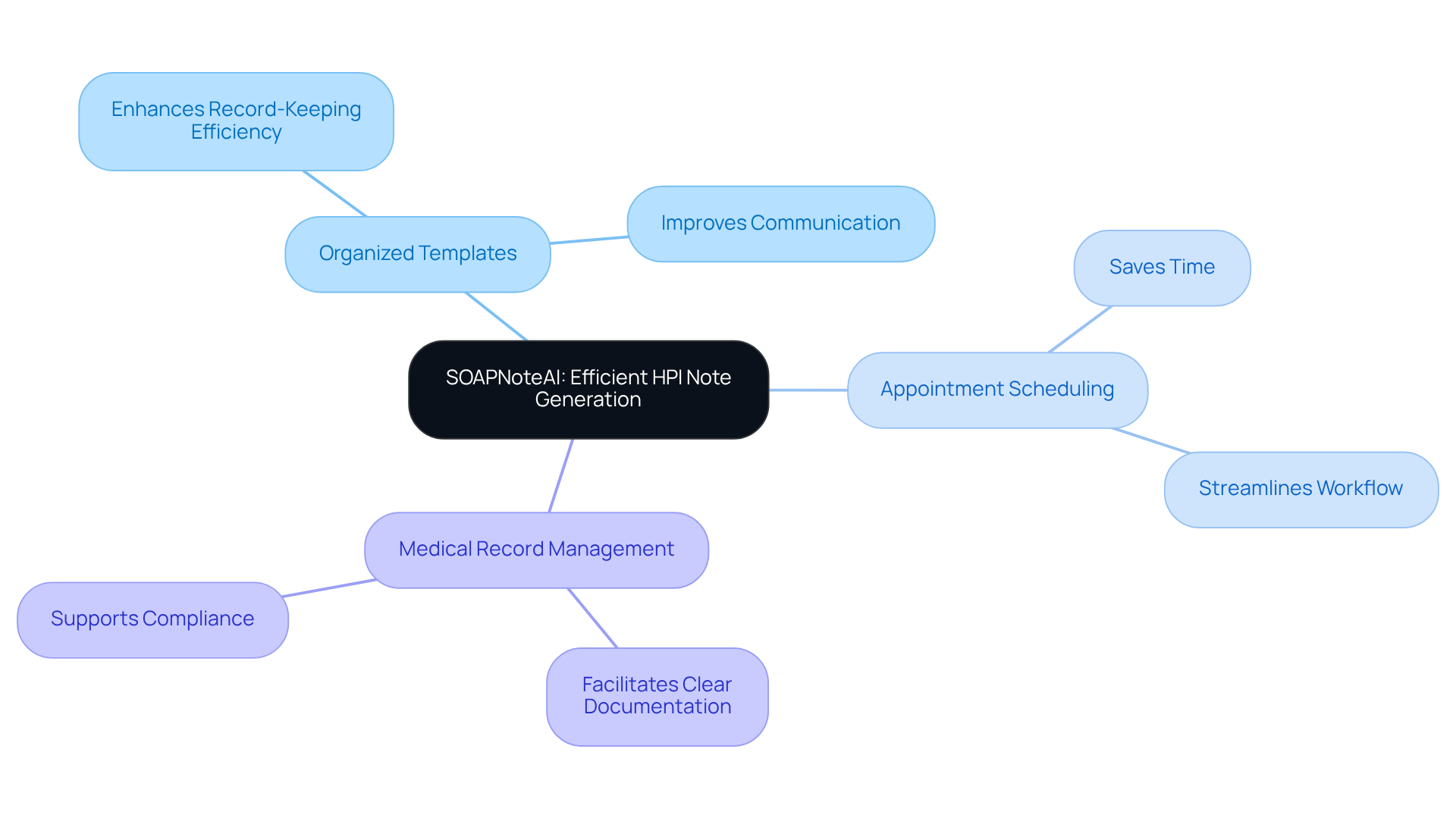
Lindy.ai: Tailored HPI Documentation for Psychiatry Practices
At CosmaNeura, we understand the unique emotional challenges that mental health professionals encounter daily. The field of psychiatry often grapples with a resistance to innovation, which can weigh heavily on practitioners who strive to provide the best care. Our specialized solutions for HPI medical scribe chart example are designed to address these challenges, allowing for comprehensive documentation of medical histories, symptoms, and treatment strategies.
By streamlining the documentation process, CosmaNeura empowers providers to create thorough and precise examples of HPI medical scribe charts. This not only enhances the quality of care but also allows clinicians to reclaim several hours each day that were previously consumed by routine administrative tasks. Imagine the impact this can have—improved outcomes for patients and greater job satisfaction for you.
Furthermore, our platform incorporates AI functionalities that analyze user interactions to offer diagnostic recommendations. This feature enhances clinical decision-making in psychiatric treatment, meeting the demand for personalized support in overcoming the reluctance to embrace innovation. We invite you to explore how CosmaNeura can , providing the tools you need to focus on what truly matters—your patients.
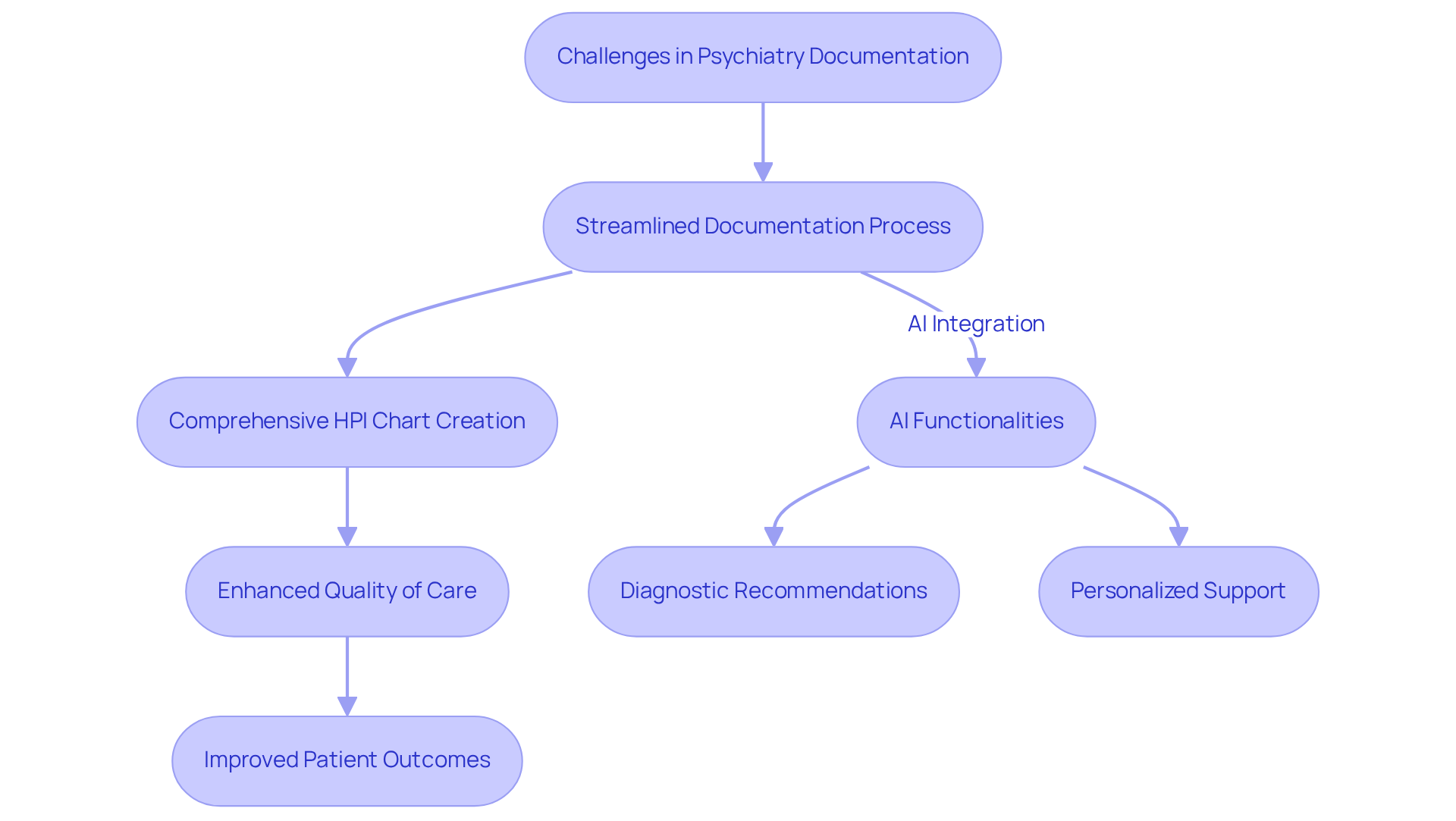
White Coat Investor Forum: Community Insights on AI Scribe Technologies for HPI
The White Coat Investor Forum serves as a vibrant space where healthcare professionals come together to discuss the emotional challenges they face in their practices, particularly regarding the latest developments in AI scribe technologies and how these relate to the HPI medical scribe chart example. Participants openly share their experiences, shedding light on both the hurdles and achievements they encounter while using various AI tools. This collaborative atmosphere nurtures innovation and creates a valuable repository of knowledge for those contemplating the integration of AI solutions into their workflows.
Insights from the community reveal the potential of AI to simplify record-keeping processes, improve accuracy, and ultimately enhance patient care. For instance, statistics indicate that AI-powered medical scribes can save physicians an average of 3-5 hours daily on record-keeping. Additionally, 92% of clinicians report that AI assistants alleviate the pressures of EHR record-keeping. However, it’s essential to acknowledge concerns regarding data privacy and the need for human oversight in AI applications.
As healthcare providers consider adopting these promising technologies, they are encouraged to explore solutions like the HPI medical scribe chart example that align with their specific practice needs. By doing so, they can not only ease but also focus more on what truly matters—their patients. What challenges do you face in your practice, and how might AI support you in overcoming them?
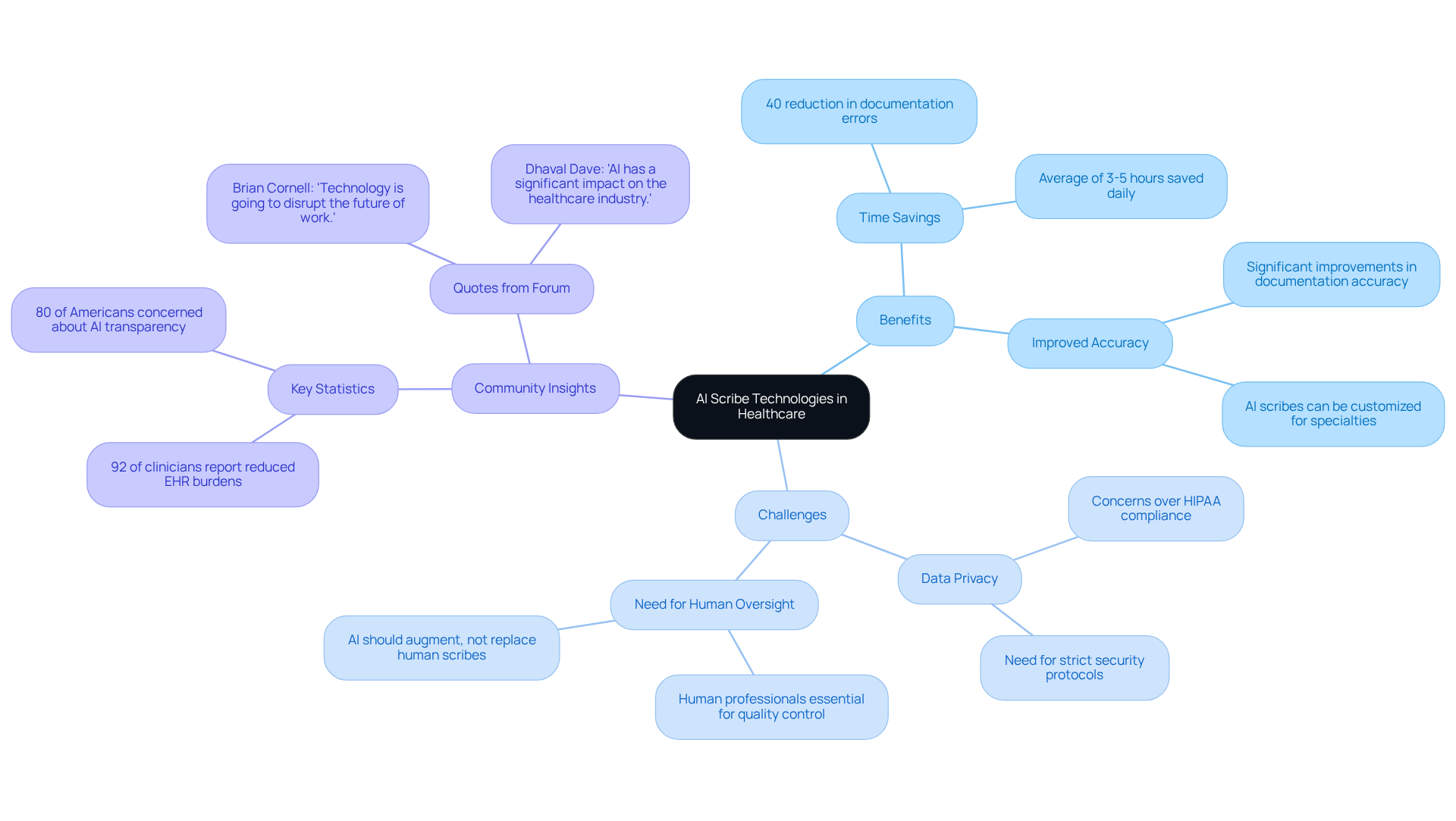
JAMA Network Open: Research on Ambient Scribe Technology for HPI Efficiency
Research published in JAMA Network Open highlights a significant emotional challenge faced by healthcare providers: the overwhelming burden of documentation. Many clinicians feel the weight of administrative tasks, which can detract from the quality of patient care. This is where ambient scribe technology steps in as a compassionate solution.
The study reveals that clinicians utilizing ambient scribing experienced a notable reduction in documentation time, with an average decrease from 6.2 minutes to 5.3 minutes per appointment. This translates to a statistically significant 20.4% reduction in time spent on notes (p<0.001). Imagine the relief of having more time to focus on your patients rather than paperwork. Additionally, this technology simplifies administrative tasks while enhancing the precision of medical records, fostering .
In a medical landscape where many providers are understandably resistant to embracing new technologies due to concerns about quality care, the benefits of ambient scribe solutions become even more apparent. With over 15,700 hours saved in record-keeping time across various medical environments—equivalent to 1,794 working days—adopting this technology is increasingly recognized as a vital approach to alleviating administrative pressures.
Expert opinions underscore that these advancements not only improve workflow efficiency but also contribute to a decrease in clinician burnout, which dropped from 42.1% to 35.1% (p=0.12). By addressing the challenges of innovation resistance, ambient scribing emerges as a transformative tool in contemporary medical practice.
As we navigate these changes together, consider how embracing such innovations can enhance your practice and, ultimately, the care you provide to your patients.
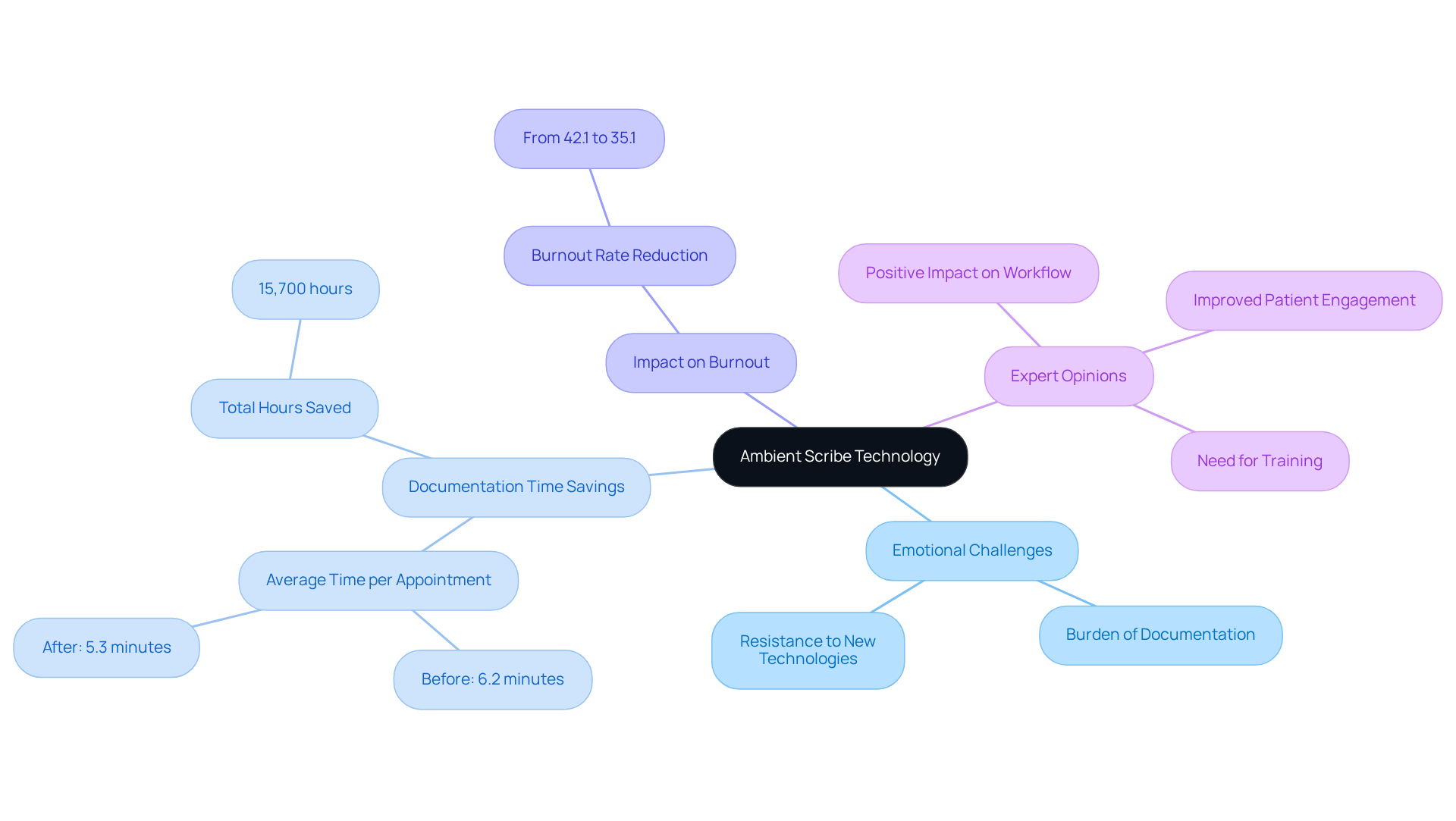
Quizlet: Training Resources for Mastering HPI Documentation
Healthcare professionals often face emotional challenges in their demanding roles. Administrative burdens can weigh heavily, impacting the quality of patient care and interactions. At Quizlet, we understand these struggles and offer a range of training materials designed to support you in mastering the HPI medical scribe chart example.
Through our interactive flashcards, quizzes, and study aids, you can enhance your understanding of key concepts and best practices in the HPI medical scribe chart example. These resources are invaluable for both new and experienced professionals seeking to refine their skills. Imagine the confidence you'll gain in your patient interactions when you feel fully equipped with the knowledge you need.
We invite you to explore these tools and discover how they can . By engaging with our materials, you not only improve your own skills but also contribute to higher quality patient care. Together, we can make a difference in the healthcare field, ensuring that every patient receives the attention and care they deserve.
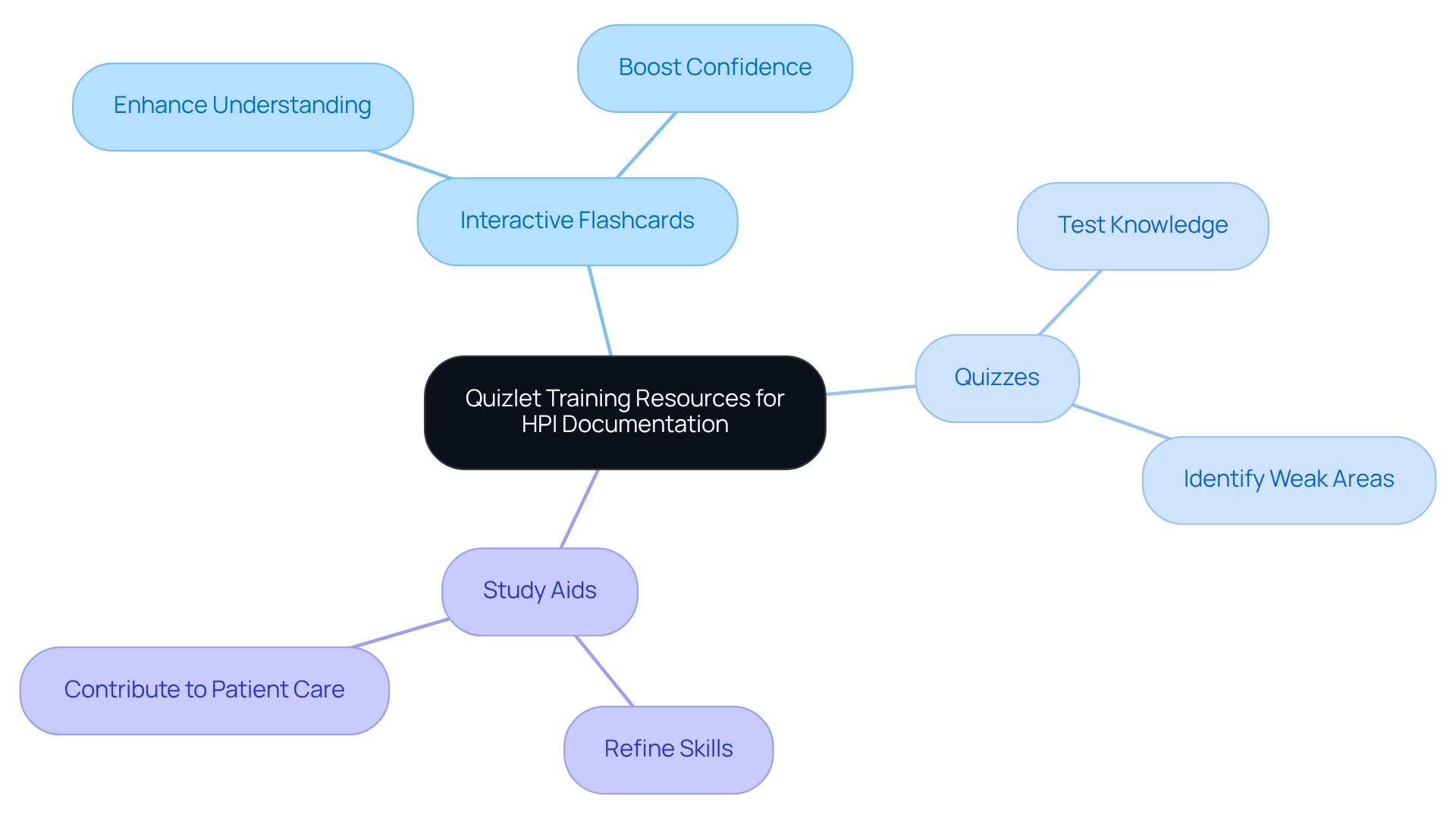
Lyle Staffing: Former Scribe Insights for Improved HPI Documentation
Insights from previous medical scribes reveal valuable strategies for improving the HPI medical scribe chart example. These experts emphasize the importance of recording vital details concisely. This not only simplifies the record-keeping process but also fosters clearer communication with healthcare practitioners. How can we better support our providers in this critical task? By applying best practices rooted in their experiences, current providers can significantly enhance the quality of interactions with clients.
Research shows that employing medical scribes can lead to a 30% decrease in recording mistakes, which improves safety and care efficiency. Imagine the relief of knowing that documentation errors are minimized. Furthermore, using an HPI medical scribe chart example can enable efficient documentation methods that reclaim precious time for healthcare providers, allowing them to focus more on patient care rather than administrative duties.
The challenges of fragmentation in medical systems and regulatory concerns can be addressed through the integration of AI-driven solutions. These solutions bridge gaps in communication and coordination among practitioners. Embracing these insights can create a more compassionate and efficient medical environment. Together, we can foster a system that benefits both practitioners and patients, leading to a .
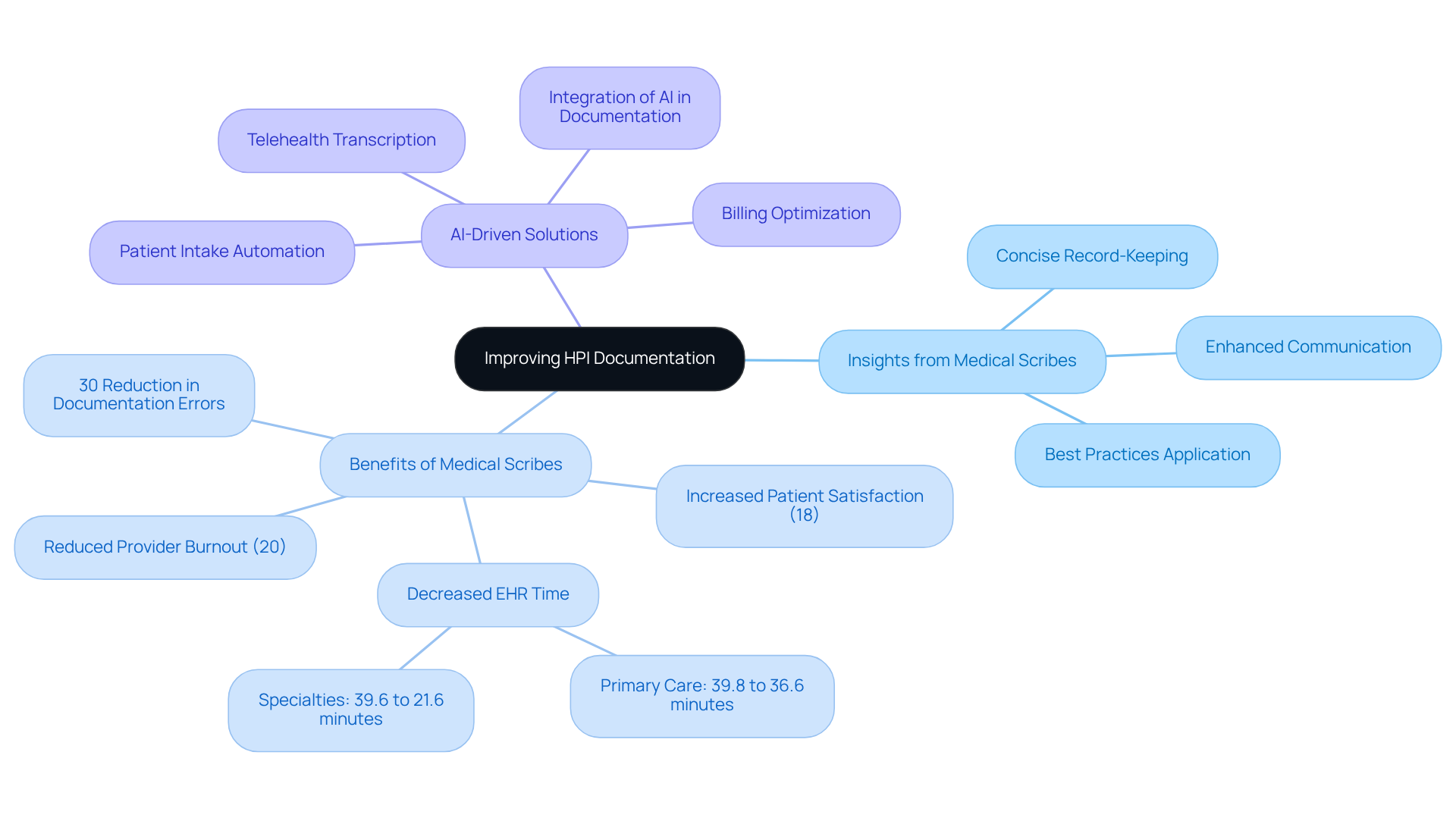
Scribe America: Comprehensive Training for Effective HPI Documentation
At Scribe America, we understand the emotional challenges that healthcare providers face daily. The burden of administrative tasks can often overshadow the primary focus of patient care. That's why our strong training programs are designed to improve efficient HPI medical scribe chart example practices among medical professionals.
These programs delve into essential aspects, such as:
- The significance of meticulous record-keeping
- Common pitfalls to avoid
- Effective strategies for enhancing efficiency
By participating in these training sessions, healthcare professionals can not only refine their record-keeping skills but also contribute to improved outcomes for their patients and a smoother workflow.
Comprehensive records are vital—they serve as crucial tools for ensuring continuity of care and supporting clinical decision-making. Studies show that thorough record-keeping practices can significantly enhance patient safety and treatment efficacy. In fact, companies with experience 218% higher income per employee compared to those without structured training, highlighting the financial benefits of efficient training.
Moreover, a remarkable 92% of workers believe that workplace training positively influences their job engagement. This reinforces the importance of ongoing education in our field. To truly maximize the advantages of documentation training, we encourage healthcare providers to implement structured programs that focus on enhancing their documentation skills, such as using the HPI medical scribe chart example. Together, we can foster a more efficient, compassionate healthcare environment.
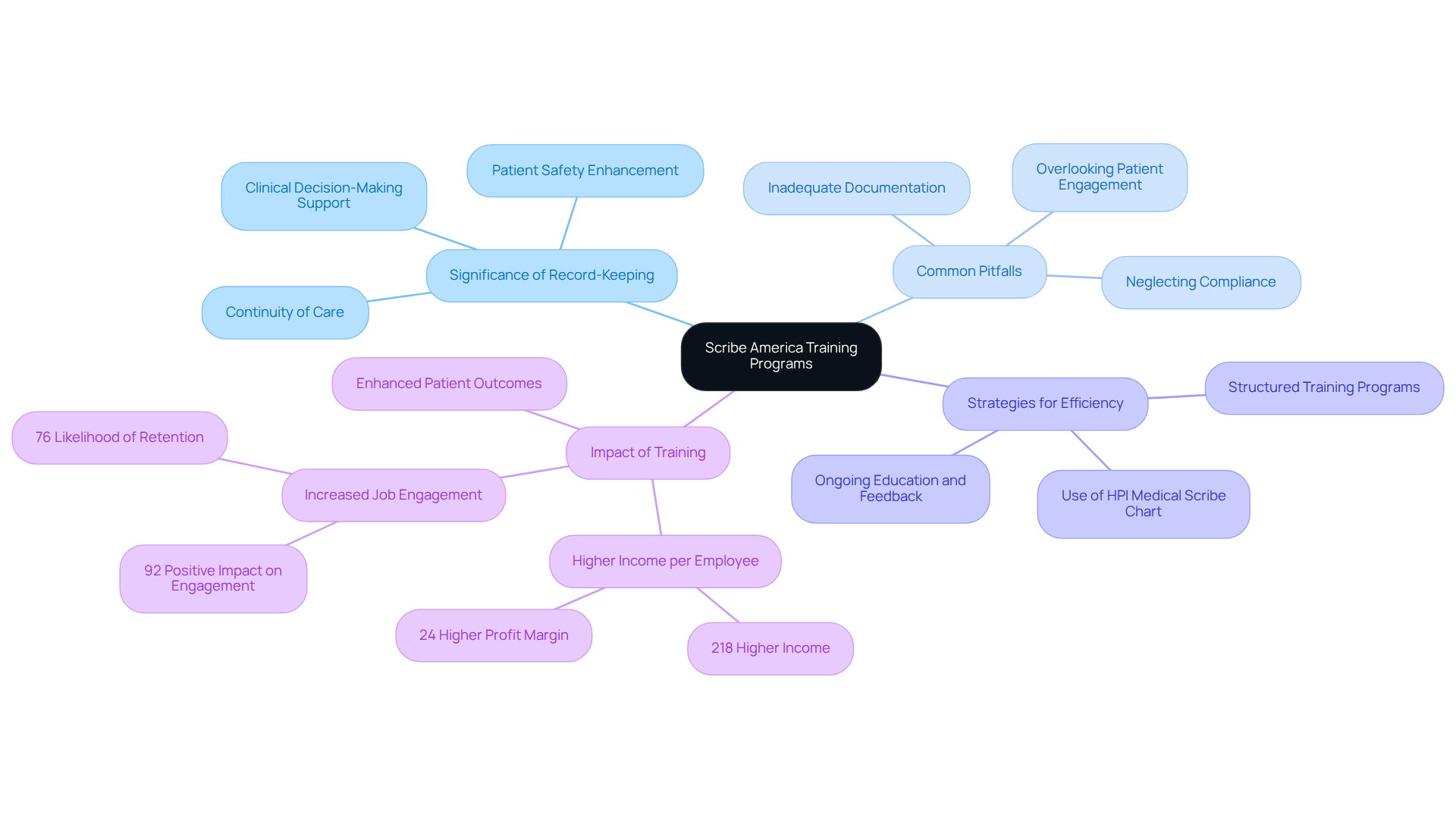
Conclusion
In the evolving landscape of healthcare, the integration of AI-driven medical scribing solutions shines as a beacon of hope for professionals weighed down by administrative tasks. By automating and streamlining the HPI documentation process, tools like CosmaNeura, DeepScribe, and SOAPNoteAI not only enhance efficiency but also enable caregivers to refocus on what truly matters—their patients. This shift towards intelligent solutions nurtures a more compassionate healthcare environment, where meaningful interactions can flourish.
Throughout the article, various examples illustrate how innovative scribing technologies can significantly reduce the time spent on documentation while improving accuracy and clarity in patient records. From the real-world applications shared by ScribeMD to the community insights from the White Coat Investor Forum, it is clear that embracing these advancements can lead to better patient outcomes and increased job satisfaction for healthcare providers. Training resources, such as those offered by Quizlet and Scribe America, further empower practitioners to master effective documentation techniques, ensuring they remain equipped to deliver high-quality care.
As healthcare continues to evolve, it is crucial for providers to embrace these technological advancements. By prioritizing the integration of efficient documentation practices, healthcare professionals can alleviate administrative burdens and enhance their focus on patient care. This not only benefits individual practices but also contributes to a more compassionate and effective healthcare system overall. The future of healthcare lies in the balance of technology and human connection—let us champion this transformation together.




